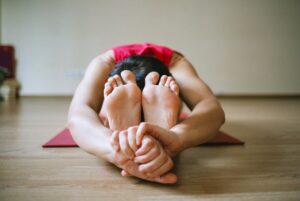Stretching is a key part of any workout however, often overlooked due to lack of perceived importance or even time restraints. Nonetheless, it is a fundamental part of any exercise routine as it can improve performance and reduce risk of injury.
When it comes to warming up, improving mobility and flexibility there are two main types of stretches we consider: dynamic and static stretching. All though the literature is varied it is thought that each has its own unique benefits and purposes. Understanding the difference between the two can help you optimise your pre-workout routine and help select the stretches that work for you.
What is Dynamic Stretching:
Dynamic stretching (like the name) involves movement. These are stretches where you move and stretch a muscle along its length with movement.
These sorts of stretches are great for warming up muscle groups prior to exercise. It prepares your body, muscles and joints for particular movements that you are going to complete. For example, in kicking sports where the hamstring (back of the thigh) is going to be subject to lots of high-speed movements an athlete might stretch dynamically by completing some leg swings. This not only replicates the kicking movement it also primes the muscle for this particular movement and stretch; Thus, reducing the risk of injury to this area.
Some examples of other dynamic stretches include:
- Arm circles – swinging the shoulders in big circles
- High Knees – elevating the heart rate and working the quadricep and hip flexor muscles
- Butt Kicks – warming up the hamstrings and again elevating the heart rate
- Ankle pumps – dynamically stretching the calf muscles
What is Static Stretching:
Static stretching (again like the name) involves holding stretch in a stationary position for a set period of time, often 15-60 seconds.
The focus here is on lengthening the muscle and increasing flexibility by gradually increasing tolerance to stretch and load in a lengthened position. These stretches can also be used as a post workout recovery by aiding in reducing muscle soreness experienced following exercise by promoting blood flow and relaxing the muscles.
 Some examples of static stretches include:
Some examples of static stretches include:
- Hamstring stretch – reaching for the toes
- Quadricep stretch – grabbing the foot and pulling it into the glute
- Calf stretch – place your hands against a wall and lean forward keeping your heel on the ground and your knee straight
Knowing the difference between these two sorts of stretching and knowing how to apply them to your workout routine will improve your performance and reduce risk of those pesky injuries. Your body will thank you for following these simple steps!
For stretching more tailored to you and your exercise goals, the team at Bend + Mend would be happy to point you in the right direction – or should I say stretch you in the right direction!

